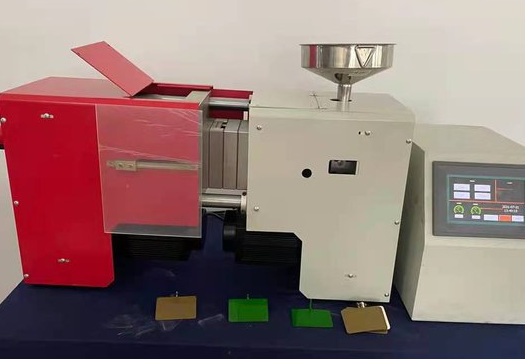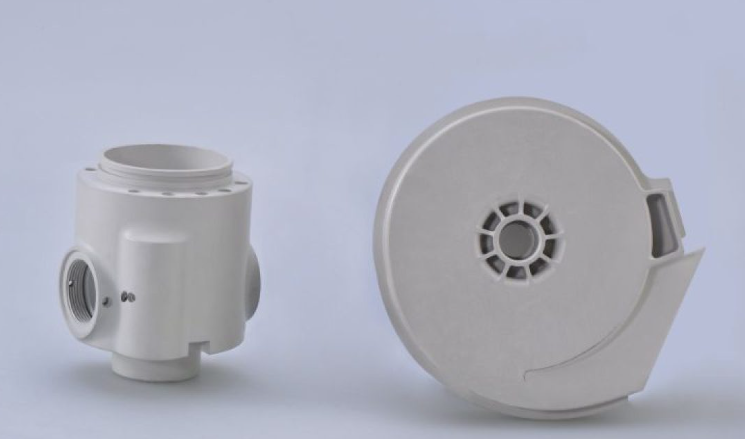The key parameters in injection molding are temperature control, pressure management, material selection, and mold clamping force.
Fundamentals of Injection Molding
Injection molding is a widely-used manufacturing process for producing parts from both thermoplastic and thermosetting plastic materials. The method involves melting the plastic material in the injection molding machine and injecting it into a mold, where it cools and solidifies into the final part.

Overview of Injection Molding Process
The injection molding process can be broken down into several stages:
- Material Preparation: The plastic material, often in the form of pellets, is fed into the injection molding machine.
- Melting and Injection: The material is heated to the required temperature, turning it into a molten state. It is then injected into a mold under high pressure.
- Cooling and Solidification: In the mold, the material cools and solidifies into the shape of the part.
- Ejection and Finishing: Once the part is fully solidified, it is ejected from the mold. Additional finishing processes such as trimming and polishing may be applied.
Key aspects like mold design, material selection, and machine settings (temperature, pressure, and injection speed) significantly influence the quality of the final product.
Types of Injection Molding Machines
Injection molding machines are categorized based on their mechanism and functionality.
- Hydraulic Injection Molding Machines:
- Description: These machines use hydraulic systems to generate the clamping force.
- Power: Ranges from 5 to 6,000 tons of clamping force.
- Cost: Generally less expensive than electric machines.
- Efficiency: Less energy-efficient compared to electric machines.
- Electric Injection Molding Machines:
- Description: These machines use electric motors for their operation, offering precision control.
- Power: Capable of generating up to 6,000 tons of clamping force.
- Cost: Higher initial cost but lower operating cost due to energy efficiency.
- Efficiency: Highly energy-efficient, leading to lower running costs.
- Hybrid Injection Molding Machines:
- Description: These machines combine the advantages of hydraulic and electric systems.
- Power: Varied, offering a wide range of clamping forces.
- Cost: Mid-range, balancing the cost between hydraulic and electric types.
- Efficiency: More efficient than purely hydraulic machines but slightly less so than electric models.
Key Parameters in Injection Molding
Injection molding relies on precise control of various parameters to ensure the production of high-quality parts. Key parameters include temperature control, pressure management, and mold clamping force, each playing a critical role in the molding process.
Temperature Control
Temperature is critical in injection molding, impacting the fluidity and cooling rate of the molten plastic. Optimal temperatures vary depending on the material, typically ranging from 200°C to 300°C for thermoplastics.
Heater Power: The heater’s power, often between 2 kW to 12 kW, directly influences the ability to reach and maintain the desired temperature. Material Behavior: Different materials, such as ABS or Polypropylene, require specific temperature ranges for optimal flow and solidification. Quality Impact: Maintaining the correct temperature ensures a smooth surface finish and dimensional accuracy.
Pressure Management
Injection Pressure is crucial for filling the mold cavity effectively. Typical pressures range from 500 to 2000 bars, depending on the machine and material used.
Fill Time: The speed at which the mold is filled is a function of pressure, influencing the overall cycle time and productivity. Material Flow: Higher pressure ensures proper material flow, especially in complex molds with intricate details. Defect Minimization: Proper pressure management reduces defects like air traps or incomplete filling.
Mold Clamping Force
The clamping force, determining how tightly the mold is closed, varies typically between 5 to 6,000 tons depending on the machine size and part complexity.
Size and Complexity: Larger parts with intricate designs require higher clamping forces. Leakage Prevention: Adequate force ensures that the mold halves remain tightly closed, preventing plastic leakage. Cycle Efficiency: Higher clamping force can reduce cycle time, improving overall production efficiency.
Material Considerations in Injection Molding
The selection of materials in injection molding is pivotal, as different materials bring unique properties and challenges to the molding process. Understanding these materials and their properties is crucial for achieving optimal results.
Types of Molding Materials
The table below provides an overview of common materials used in injection molding, along with their key characteristics:
| Material | Melting Point | Density (g/cm³) | Cost Range | Key Properties | Common Applications |
|---|---|---|---|---|---|
| ABS | 200°C – 250°C | 1.04 – 1.07 | Moderate | High toughness, good thermal stability | Automotive parts, toys |
| Polypropylene (PP) | 130°C – 171°C | 0.895 – 0.91 | Low to Moderate | Resistant to fatigue, good chemical resistance | Containers, packaging |
| Polycarbonate (PC) | 220°C – 300°C | 1.2 – 1.22 | High | High impact strength, transparent | Eyewear lenses, bulletproof glass |
| Polyethylene (PE) | 105°C – 115°C | 0.91 – 0.96 | Low | Good ductility, chemical resistance | Bottles, tubing |
| Nylon | 190°C – 350°C | 1.13 – 1.15 | Moderate to High | High mechanical strength, wear resistance | Gears, bearings |
Material Properties and Injection Molding
Each material presents unique challenges and advantages in injection molding:
- ABS: Offers great surface finish and is easy to paint. However, it is sensitive to UV light and requires UV stabilizers for outdoor use.
- Polypropylene (PP): Known for its fatigue resistance, making it ideal for living hinges. It has lower stiffness compared to materials like ABS.
- Polycarbonate (PC): Renowned for its impact resistance and clarity. It can be prone to scratching and requires careful handling.
- Polyethylene (PE): Offers excellent chemical resistance and flexibility. Its low stiffness can be a limitation for some applications.
- Nylon: Known for its strength and thermal stability, but can absorb moisture, which may affect dimensional stability.
Machine and Mold Design in Injection Molding
The design of the injection molding machine and the mold are fundamental to the quality, efficiency, and cost-effectiveness of the produced parts. Precise machine design and meticulous mold design are pivotal for achieving high-quality output.
Importance of Machine Precision
Machine precision directly affects the quality and consistency of injection molded parts. High-precision machines offer:
- Improved Part Quality: Consistent and precise control over parameters like temperature and pressure.
- Reduced Waste: Precision machines minimize material wastage, contributing to cost efficiency.
- Faster Production Speeds: High precision often allows for quicker cycle times without sacrificing quality.
Cost Implications: While high-precision machines might have a higher upfront cost, ranging from $20,000 to $200,000 depending on size and capabilities, they often lead to long-term savings due to reduced waste and higher quality production.
Mold Design and Its Impact on Quality
Mold design is crucial as it directly impacts the quality and functionality of the injection molded part.
- Complexity and Precision: Molds can range from simple designs to complex geometries, influencing cost and manufacturing time. Complex molds may cost upwards of $10,000, depending on the intricacies.
- Material Choice for Mold: Materials like steel or aluminum are commonly used, with steel being more durable but more expensive.
- Surface Finish: The mold’s surface finish affects the aesthetics of the final product. High-quality finishes increase mold cost but improve product appearance.

Process Optimization in Injection Molding
Optimizing the injection molding process is key to balancing speed, quality, and efficiency, which are critical for maximizing productivity and minimizing costs.
Balancing Speed, Quality, and Efficiency
Achieving a balance between speed, quality, and efficiency in injection molding involves several considerations:
Optimized Cycle Time: Reducing cycle time, ideally to a range of 15 to 60 seconds, enhances productivity. However, it’s crucial to ensure that this does not compromise the quality of the final product.
Quality Control: Maintaining high-quality standards involves strict control over parameters like temperature and pressure. Ensuring consistent quality can sometimes mean sacrificing speed for better results.
Energy Efficiency: Modern injection molding machines are designed for energy efficiency, often reducing energy consumption by 20% to 50%. This not only cuts costs but also supports sustainable practices.
Advanced Techniques in Process Control
Innovative techniques in process control are integral to optimizing injection molding operations:
Real-Time Monitoring: Implementing systems for real-time monitoring of parameters allows for immediate adjustments, enhancing the overall quality and efficiency of the process.
Automation and Robotics: Utilizing automation for tasks like material handling and part removal speeds up the process and reduces labor costs.
Predictive Maintenance: Employing predictive maintenance techniques can prevent machine downtime, which can be costly. Regular maintenance can extend the lifespan of equipment, which often ranges from 5 to 10 years.
Software for Process Optimization: Advanced software solutions can simulate the molding process, allowing for fine-tuning before actual production begins. This can significantly reduce the trial and error typically associated with process setup.




